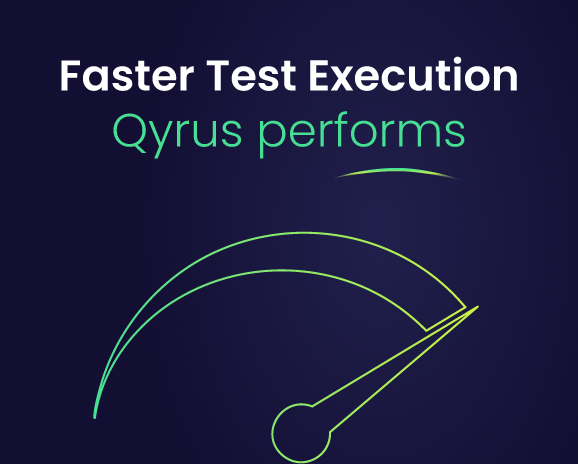Feature Friday – How to Increase Your Test Coverage With Collaborative Testing
As applications become a medium for business progress and success, Quality assurance processes have never been more essential. From the developer down to the primary user and back, quality assurance teams ensure functionality and user experience through consistent testing practices. Regardless of the practice, manual or automated, coded or solution architecture implementations, the fundamentals of Quality assurance rely on collaboration. The best QA teams have engineers, test architects, developers, and business analysts that are in tune with feature implementations, release cycles, and required application functionality. This week’s Feature Friday discusses one of the pillars of Quality Assurance, collaboration. Despite much to talk about with Qyrus’ all in one automated testing platform, Dan and Tim will discuss something more fundamental in how Qyrus enhances collaboration and communication throughout the development and deployment lifecycles, leading to higher quality applications with faster release times.
Tell us more about collaborative testing offered by Qyrus and its use cases.
Dan:
Qyrus has a lot to offer when it comes to collaborative testing and helping enable testing teams to be more collaborative not only within their own team but also with the organization as a whole. Some of these features include the ability to lock scripts from being modified, the ability to download, share, and email reports to anyone.
Tim:
On top of that, everyone can have access to each other’s tests. This also enables more collaborative test building among team members. Testers can work off of each other by copying or cloning tests created by other members in order to further their testing. This helps promote reusability in the testing environment. And, everything being done from the cloud enables better management as a whole. Our test repository also promotes better organization amongst team members.
Dan:
This is also very helpful with handoffs. Giving quick project access or sharing reports provides immediate clarity simplifying knowledge transfer of test requirements and data. Regardless of where your colleague is located, everything is consistent on a singular platform.
What kind of impact on the testing process does collaborative testing have?
Tim:
The biggest impact is going to be seen in the area of maintenance. Because everything is on the cloud and centralized in one area, there is less maintenance seen on the side of the testers. And, overall, all of our collaborative features provide impact in almost all aspects and areas of testing.
Dan:
The key, obviously, is to promote collaboration which in turn can help in other aspects such as cost and effort reduction as well as an increase in test coverage overall. A well-oiled machine works with extreme speed and efficiency, and a testing ecosystem is no exception.
How might collaborative testing help testers, developers, and business technologists? What value can collaborative testing bring?
Tim:
Testers would be the primary beneficiary of the collaborative testing process. These features help enable teams to better communicate and collaborate. And in a similar fashion to testers, developers in turn would become more collaborative. But more importantly is that these two teams, although separate, will become more effective when communicating and collaborating together. No longer do developers have to waste time in setting up testing environments and developers can unit test their applications early on in the process.
Dan:
And in terms of business technologists, they would become more engrained in the testing and development process because of their ability to just log in and check out what’s going on. On top of that they can download reports as well as PDF generated reports which can help them understand if the stakeholder requirements are being met.
Does the same or similar functionality exist without Qyrus, and how do competitors address similar problems?
Dan:
Straight off the bat, if the competitor doesn’t have a cloud-native platform, they’re already leagues behind us in terms of collaboration and testing. As seen with our competitors, it’s not as seamless of an onboarding situation when it comes to adding new members to their teams. With Qyrus, everything is done practically instantly and set up with the click of a button.
Tim:
And prior to Qyrus or any testing platform, users would have to use something like Git or other 3rd party applications in order to have a collaborative testing environment. The biggest thing is sharing these tests with other members of the team – whether it be for review, helping another team member, or as a continuation of the testing process – everything is easily accessible.
Dan:
The last thing anyone wants is a fragmented testing ecosystem. This can lead to breaks in the process and issues later on down the road. Furthermore, the users and environment setup and maintenance required for all QA team members to have required access can quickly become a nightmare. Everything being in one spot is not only convenient but also helps with collaboration and onboarding.
How do you see collaborative testing on Qyrus impacting day-to-day operations across organizations?
Tim:
By the nature of making the testing process more collaborative, things become easier within a team and their communication with each other. Locking certain scripts can prevent them from being meddled with on accident. Furthermore, small testing teams can script a rather large amount of test cases in a relatively short amount of time.
Dan:
If you think about it, test coverage as a whole will increase, making testers busier day-to-day, but all for a good reason. Lastly, reusability is promoted, so we might see a decrease in time spent doing repetitive tasks or scripting things already scripted.
If the idea is to promote the highest quality application, in the fastest time, it is essential that developers, testers, and business analysts not only have access to all application and release information, but transparency and collaboration throughout the entire development, Quality assurance, and deployment lifecycle. Qyrus enables the highest levels of collaboration through a cloud native platform. With the ability to quickly spin up user instances, sharable reporting, test building/cloning, and restricted access settings, Qyrus has created the perfect environment for professionals across businesses to co-create and release high quality, customer centric, applications into the market.






